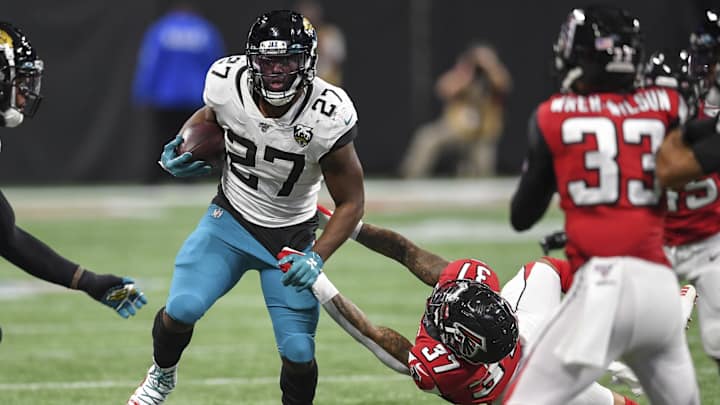What the Numbers Say About the Jaguars' Red Zone Struggles in 2019

It is no secret that the Jacksonville Jaguars struggled on offense for much of 2019. Last season, the Jaguars offense ranked 26th in points scored, 19th in yards per play and 24th in offensive Expected Points Added (EPA) per play. In summary, it was bad.
Jacksonville’s offense was bad specifically inside the opponent’s 20 yard line, i.e. the red zone. The Jaguars ranked 23rd in red zone trips - meaning it was below-average at getting into scoring position - but more concerningly, it ranked 27th in red zone points scored and 30th in red zone touchdowns scored. Jacksonville also ranked dead last in success rate in the red zone, per Sharp Football Stats.
The Jaguars fared so poorly in the red zone in part due to playcalling. Jacksonville increased its run rate from 41% out of the red zone to 46% in the red zone in neutral situations (one score games). Generally, this would be a good idea, as rushing is more efficient in short-yardage situations and the red zone- but not when the ball carrier is Leonard Fournette.
Fournette had an impressive 2019 season from a cumulative perspective, but it was much worse from an efficiency perspective. This holds true in the red zone: Fournette ranked fifth in red zone carries but 54th in yards per attempt, 56th in touchdown rate and 58th in success rate among 58 eligible running backs.
Fournette’s red zone inefficiency was a catalyst for Jacksonville’s red zone inefficiency as a whole. The Jaguars ran on early downs (first and second down) on 55% of red zone plays, the 10th highest rate in the league. Yet it had an abysmal 25% success rate on such plays, easily worst in the league- for comparison, no other team had a success rate under 40%.
Fournette specifically ranked seventh in carries and last in success rate among eligible running backs on early down red zone rushes. Jacksonville’s most common play call on 1st-and-10 in the red zone was a Leonard Fournette rush. On those plays, Fournette produced a 7% success rate. Seven percent!
Meanwhile, Jacksonville’s 44% success rate on passing plays in the red zone on early downs ranked 13th, but it passed at just the 23rd highest clip in the league. As a result of poor performance on early downs, the Jaguars were not set up for success. It ranked 29th in yards to go on red zone third downs, and 32nd in red zone first down rate (percentage of plays resulting in first down or touchdown).
Another reason for Jacksonville’s lack of red zone scoring was a high volume of field goals. The Jaguars ranked second in red zone field goals but 30th in red zone touchdowns and 27th in total red zone points scored last season. While field goals do put points on the board, it is not nearly as valuable as touchdowns, especially in the red zone. Teams should be more aggressive on fourth downs, especially those like the Jaguars that don’t create many scoring opportunities in the first place.
Jacksonville’s red zone offense last season was clearly unsatisfactory. But one reason there’s optimism for next season is a change in play-callers. Jay Gruden will replace John DeFilippo as Jacksonville’s offensive coordinator.
Previously, Gruden was offensive coordinator for the Cincinnati Bengals (2011-2013) and head coach for the Washington Redskins (2014-2019). On average, Gruden’s offenses from 2011-2018 (he was fired after Week 5 in 2019) yielded a red zone touchdown rate of 53.56%, compared to Jacksonville’s 40.43% 2019 rate. His offenses cumulatively ranked 16th in red zone touchdowns, 12th in red zone field goals and 17th in total red zone points scored. Gruden’s teams ranked around league average in fourth down aggressiveness as well.
Another reason that Jacksonville’s red zone struggles could turn around is that red zone performance is inconsistent from year to year. Football can be extremely noisy, and that remains true in the red zone. For example, the Houston Texans ranked 29th in red zone touchdown rate in 2018 but ninth in 2019 despite few offensive roster changes, showing that red zone performance is not necessarily predictable nor stable.
This doesn’t mean that Jacksonville could be expected to be a top-10 red zone offense next season- but with Gruden taking over playcalling and Gardner Minshew entering his second season, it’s definitely fair to anticipate an improvement in red zone performance in 2020.
